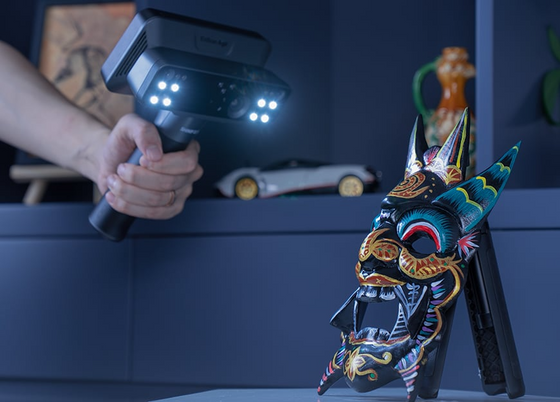MakerBot Method Announced: How Does It Compare to the Replicator?
December 12, 2018
This week MakerBot introduced their new Method 3D printer to be released in 2019. Starting at $6499 US ($8650 CAD) this printer is promising faster speeds and breakthrough technologies by leveraging patents from their parent company, Stratasys. We're going to review how it compares to their previous generation of printers, the MakerBot Replicator+, and Makerbot Replicator Z18.
Tech Specs
| Replicator + | Replicator Z18 | Method | |
| Build Volume | 29.5 L X 19.5 W X 16.5 H CM (11.6 X 7.6 X 6.5 IN) |
30.0 L x 30.5 W x 45.7 H CM (11.8 L x 12.0 W x 18.0 H IN) |
Single Extrusion Dual Extrusion |
| Print Heads | 1 | 1 | 2 |
| Layer Resolution | 100 microns | 100 microns | Range: 20 - 400 microns |
| Filament Diameter | 1.75 mm | 1.75 mm | 1.75 mm |
| Camera Resolution | 640 x 480 | 320 x 240 | 640 x 480 |
Highlights
There are four features that really stand out as highlights for this new MakerBot model: Dual Extrusion, Dry-Sealed Material Bays, Auto Leveling and the Circulating Heated Chamber.
Dual Extrusion
We're no strangers to Dual Extrusion as Ultimaker added it to their printers back in 2016 with the Ultimaker 3 and continued to advance its use in their recently released flagship printer, the Ultimaker S5. The Sigma R19 revision that came out this year also includes dual extrusion with independent moving heads. So we're happy to see Makerbot join the fray with their own rendition.
Dual extrusion allows you to print two-coloured parts which adds a level of polish to prototypes, but it is more than fancy colours. Dual extrusion also allows for the use of support materials, like the water-soluable PVA for prints with complex geometries and overhangs.
Standard same-material supports are difficult to remove, limiting their use for small and hard to reach areas. They also can cause damage to the print surface during removal leaving an undesirable surface. With PVA soluble supports you can literally dissolve the support material in water.

Dry-Sealed Material Bays
Humidity can be a major problem for filaments. The material absorbs the water from the air over time and this can lead to crackling sounds during printing and majorly reduced print quality. We can combat this issue by storing filaments in sealed bags with silica packets or using specialty containers and dryers.
MakerBot seeks to prevent this with their dry-sealed material bays. Tucked under the printer, it uses temperature and humidity control sensors to make sure the material is stored in an optimal environment.
This is a fairly unique feature for desktop printers and we're excited to see if it is successfully implemented.

Circulating Heated Chamber
Heated beds are utilized by FDM 3D printers to prevent warping by keeping the extruded plastic warm. The MakerBot Method goes in a different direction with "full active heat immersion" to keep the temperature consistent for the entire around the entire print. This isn't something that is needed for PLA, but might be useful for printing with PETG and may mean they will be including more material options in the future.

Conclusion
Overall, it looks like MakerBot is working toward a better printer for professional users and we're looking forward to seeing how these innovations and modifications perform. The Method will be available in Q1 2019 through Shop3D.ca.
Also in News

Shop3D.ca at ADM Toronto (Advanced Design & Manufacturing Expo)
September 23, 2025
Shop3D.ca, Canada’s leading provider of 3D printing solutions, is proud to announce its participation in the Advanced Design & Manufacturing Expo (ADM), taking place October 21 – October 23, 2025, at the Toronto Congress Centre.

Shop3D.ca Open House: 3D Scanning with the EinScan Rigil
September 22, 2025
Join the Shop3D.ca technical team for an interactive demo of the new EinScan Rigil 3D scanner. Learn the ins and outs of professional 3D scanning, and bring a medium-sized object to scan. You’ll leave with your very own 3D model file—just make sure your item is light enough to handle and can be rotated during scanning.

Shop3D.ca at the Canadian Manufacturing Technology Show (CMTS)
September 10, 2025
Shop3D.ca, Canada’s leading provider of 3D printing solutions, is proud to announce its participation in the Canadian Manufacturing Technology Show (CMTS), taking place September 29 – October 2, 2025, at the Toronto Congress Centre.


